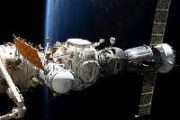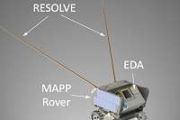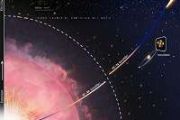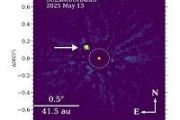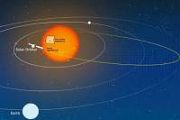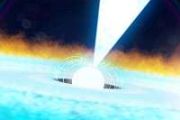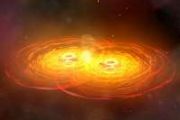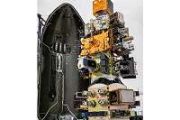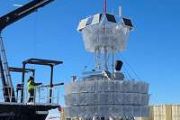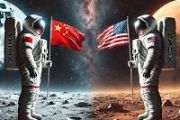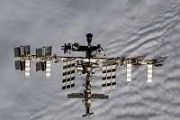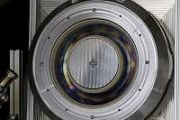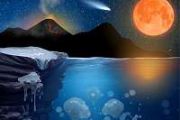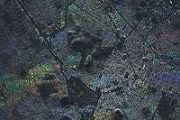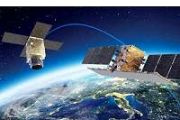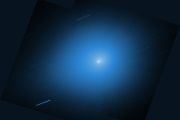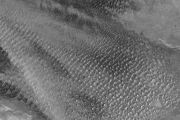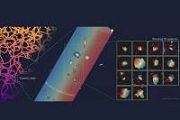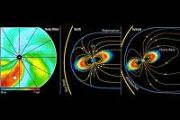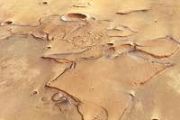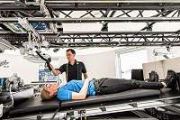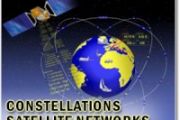
Copernical Team
Sierra Space Reaches Key Milestone in Space Force R-GPS Program
 Sierra Space, a major player in commercial space and defense technology, has announced the successful completion of a critical testing phase for its Resilient GPS (R-GPS) technology, developed in collaboration with the U.S. Space Force (USSF). This third milestone marks a significant step forward, showcasing the integration of FlatSat flight software and hardware subsystems, as well as successfu
Sierra Space, a major player in commercial space and defense technology, has announced the successful completion of a critical testing phase for its Resilient GPS (R-GPS) technology, developed in collaboration with the U.S. Space Force (USSF). This third milestone marks a significant step forward, showcasing the integration of FlatSat flight software and hardware subsystems, as well as successfu Rheinmetall and ICEYE to Form Joint Venture for Satellite Production and Space Solutions
 Rheinmetall and leading SAR satellite manufacturer ICEYE have announced plans to form a joint venture dedicated to satellite production and advanced space solutions. This partnership, formalized through a memorandum of understanding signed on May 8, 2025, marks a significant step forward in the companies' collaborative efforts to expand their presence in the global space market.
Under the
Rheinmetall and leading SAR satellite manufacturer ICEYE have announced plans to form a joint venture dedicated to satellite production and advanced space solutions. This partnership, formalized through a memorandum of understanding signed on May 8, 2025, marks a significant step forward in the companies' collaborative efforts to expand their presence in the global space market.
Under the The Squid Galaxy's neutrino game just leveled up
 Buried deep in the ice in the Antarctic are "eyes" that can see elementary particles called neutrinos, and what they've observed is puzzling scientists: a remarkably strong neutrino signal accompanied by a surprisingly weak gamma-ray emission in the galaxy NGC 1068, also known as the Squid Galaxy.
The "eyes" are a collection of detectors buried in a cubic kilometer of ice called the IceCub
Buried deep in the ice in the Antarctic are "eyes" that can see elementary particles called neutrinos, and what they've observed is puzzling scientists: a remarkably strong neutrino signal accompanied by a surprisingly weak gamma-ray emission in the galaxy NGC 1068, also known as the Squid Galaxy.
The "eyes" are a collection of detectors buried in a cubic kilometer of ice called the IceCub New UK Initiative to Revolutionize Solar Atmosphere Modelling
 A new GBP 5 million, five-year research initiative aims to tackle some of the most fundamental questions in solar physics, with a focus on the complex and dynamic processes occurring within the Sun's atmosphere. The Solar Atmospheric Modelling Suite (SAMS) project, funded by the Science and Technology Facilities Council's (STFC) new Large Award scheme, seeks to develop a next-generation modellin
A new GBP 5 million, five-year research initiative aims to tackle some of the most fundamental questions in solar physics, with a focus on the complex and dynamic processes occurring within the Sun's atmosphere. The Solar Atmospheric Modelling Suite (SAMS) project, funded by the Science and Technology Facilities Council's (STFC) new Large Award scheme, seeks to develop a next-generation modellin Study reveals new source of the heavy elements
 Magnetar flares, colossal cosmic explosions, may be directly responsible for the creation and distribution of heavy elements across the universe, suggests a new study.
For decades, astronomers only had theories about where some of the heaviest elements in nature, like gold, uranium and platinum, come from. But by taking a fresh look at old archival data, researchers now estimate that up to
Magnetar flares, colossal cosmic explosions, may be directly responsible for the creation and distribution of heavy elements across the universe, suggests a new study.
For decades, astronomers only had theories about where some of the heaviest elements in nature, like gold, uranium and platinum, come from. But by taking a fresh look at old archival data, researchers now estimate that up to Plato nears final camera installation for exoplanet hunt
 The assembly of the European Space Agency's (ESA) Plato mission is making significant strides, with 24 of the 26 planned cameras now integrated into the spacecraft. Once operational in space, Plato will utilize this extensive array of cameras to survey a vast portion of the sky in its search for terrestrial planets, aiming to uncover potentially habitable worlds.
Assembly work is progressi
The assembly of the European Space Agency's (ESA) Plato mission is making significant strides, with 24 of the 26 planned cameras now integrated into the spacecraft. Once operational in space, Plato will utilize this extensive array of cameras to survey a vast portion of the sky in its search for terrestrial planets, aiming to uncover potentially habitable worlds.
Assembly work is progressi Simpler Quantum Information Processing Achieved Using Photon Time Encoding
 A team of researchers from Griffith University has introduced a new technique that significantly simplifies the use of high-dimensional quantum information encoded in light, potentially advancing next-generation quantum technologies.
This breakthrough, detailed in the journal Physical Review Letters, leverages a quantum effect known as Hong-Ou-Mandel (HOM) interference to streamline the de
A team of researchers from Griffith University has introduced a new technique that significantly simplifies the use of high-dimensional quantum information encoded in light, potentially advancing next-generation quantum technologies.
This breakthrough, detailed in the journal Physical Review Letters, leverages a quantum effect known as Hong-Ou-Mandel (HOM) interference to streamline the de Oracle-M Completes Successful Hot Fire Test for Cislunar Space Mission
 The United States Space Force (USSF) Space Systems Command (SSC) and the Air Force Research Laboratory (AFRL) have achieved a critical milestone in cislunar space situational awareness (SSA) with the successful completion of the Oracle-M (Oracle-Mobility) Hot Fire Test at Edwards Air Force Base, California. Conducted from March 16 to 21, 2025, this test represents a pivotal step in readying Orac
The United States Space Force (USSF) Space Systems Command (SSC) and the Air Force Research Laboratory (AFRL) have achieved a critical milestone in cislunar space situational awareness (SSA) with the successful completion of the Oracle-M (Oracle-Mobility) Hot Fire Test at Edwards Air Force Base, California. Conducted from March 16 to 21, 2025, this test represents a pivotal step in readying Orac Martian Seismic Data Suggests Potential Liquid Water Reserves at Depth
 Liquid water, a critical component for the habitability of Mars, may still be present beneath its surface, according to a recent study conducted by an international team of geophysicists and geologists. The research, led by Dr. Weijia Sun from the Institute of Geology and Geophysics, Chinese Academy of Sciences, alongside Dr. Hrvoje Tkalcic of The Australian National University, Dr. Marco G. Mal
Liquid water, a critical component for the habitability of Mars, may still be present beneath its surface, according to a recent study conducted by an international team of geophysicists and geologists. The research, led by Dr. Weijia Sun from the Institute of Geology and Geophysics, Chinese Academy of Sciences, alongside Dr. Hrvoje Tkalcic of The Australian National University, Dr. Marco G. Mal Rocket Lab Secures U.S. Air Force Contract for Neutron Re-Entry Mission
 Rocket Lab USA, Inc. (Nasdaq: RKLB) has announced that it will launch its new medium-lift reusable rocket, Neutron, for the U.S. Air Force Research Laboratory (AFRL) as part of a pioneering Rocket Cargo mission. This mission, set for no earlier than 2026, will serve as a critical step in developing rapid, point-to-point cargo transportation capabilities, aiming to bolster global defense logistic
Rocket Lab USA, Inc. (Nasdaq: RKLB) has announced that it will launch its new medium-lift reusable rocket, Neutron, for the U.S. Air Force Research Laboratory (AFRL) as part of a pioneering Rocket Cargo mission. This mission, set for no earlier than 2026, will serve as a critical step in developing rapid, point-to-point cargo transportation capabilities, aiming to bolster global defense logistic 

